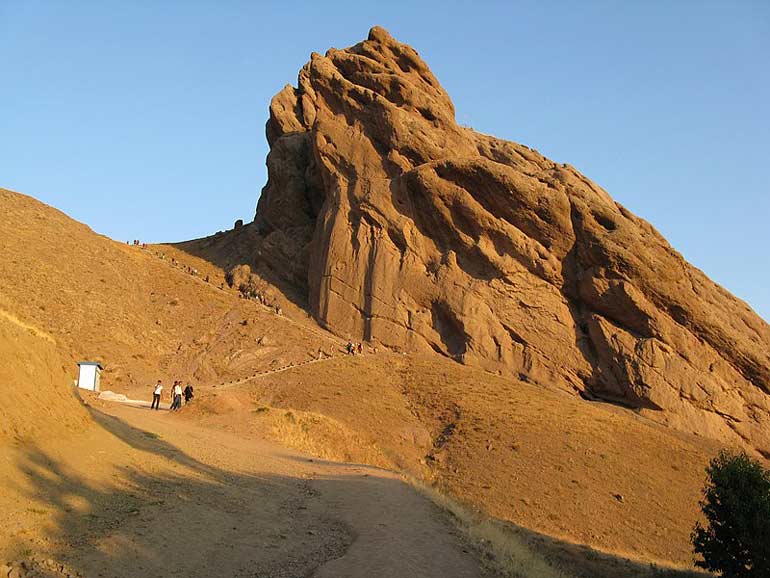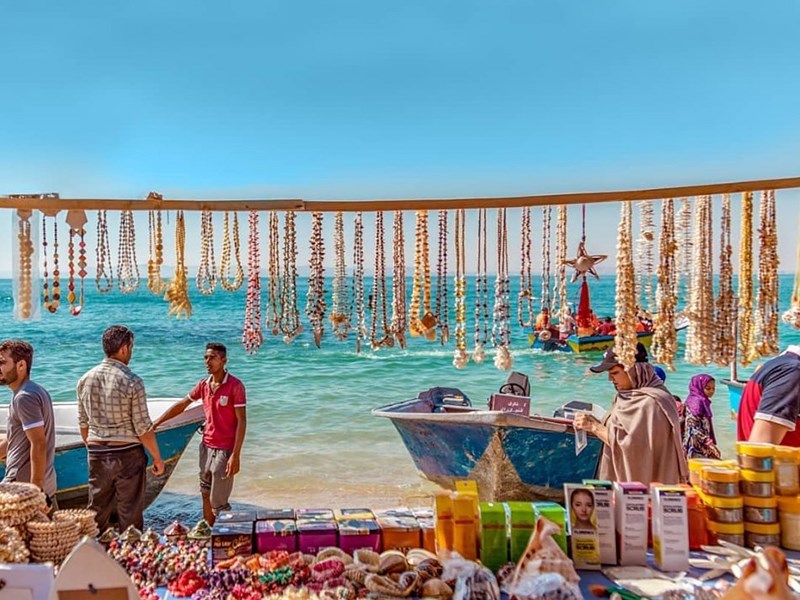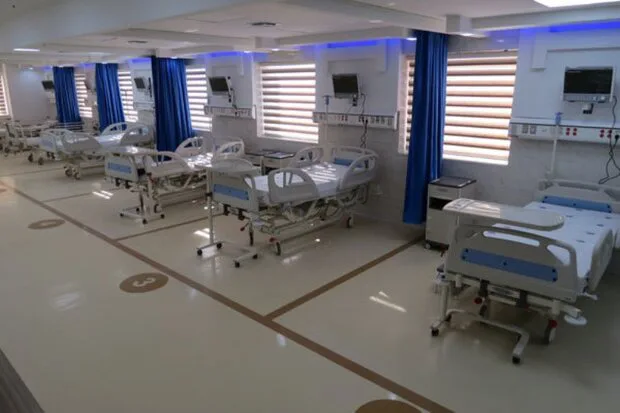Alamut Castle in Qazvin
Tourist spots around Tehran are among the best options for a quick getaway, and one of their biggest advantages is their proximity to the city. On one beautiful spring weekend, I decided to take a one-day trip on a Thursday afternoon. Eager to explore a new place, I chose Alamut Castle in Qazvin, located about four hours away from Tehran. That evening, I packed all the essentials for a day trip and saved the address and location on my phone to easily navigate my way to the castle without worry.
However, I overlooked one important detail: the walking path to reach the castle. Some websites had not mentioned it, and I was caught off guard by the distance I had to cover on foot. Without prior preparation, I found the trek a bit exhausting. So, after the trip, I decided to share my experience and provide you with complete information about the various parts of Hassan Sabbah’s Castle and its historical background.
If you’re like me and interested in exploring the natural beauty and historical sites of Iran, be sure to read this article from the Gulf City Pedia travel magazine.

Alamut Castle in Qazvin
Alamut Castle is one of Qazvin’s historical attractions and is regarded by many archaeologists as a significant site for studying a particular period in history. At one point, the name of Alamut Castle was closely associated with Hassan Sabbah and the Ismaili sect, as he resided here for 35 years and ruled the region from this stronghold.
Spanning over 20,000 square meters, Alamut Castle is built atop a rocky cliff. Given its location, the castle offers stunning views of the surrounding area. In its time, the highest point of the castle likely served as an excellent lookout.
Alamut Castle, also known as the “Eagle’s Nest,” was a robust fortress meant to protect Hassan Sabbah and his followers. Its location underscores its strategic importance: perched high on a steep, hard-to-reach cliff in Qazvin, the castle served as a military stronghold and a defense against invasions.
Although Alamut was once a grand structure, many of its parts have deteriorated over time due to weather and lack of maintenance. Nevertheless, it remains an essential part of Qazvin’s history, drawing both tourists and locals alike.
Located in the northeastern part of Gazorkhan village in Qazvin, Alamut Castle stands at an elevation of 2,363 meters above sea level and 200 meters high. The castle was built along a deep precipice, making it nearly impenetrable in ancient times.
Surrounded by four deep ravines, the only access to the castle is a challenging route on its northeastern side. On all four sides, red-colored cliffs and lush green areas make Alamut Castle one of Qazvin’s historic and scenic destinations.
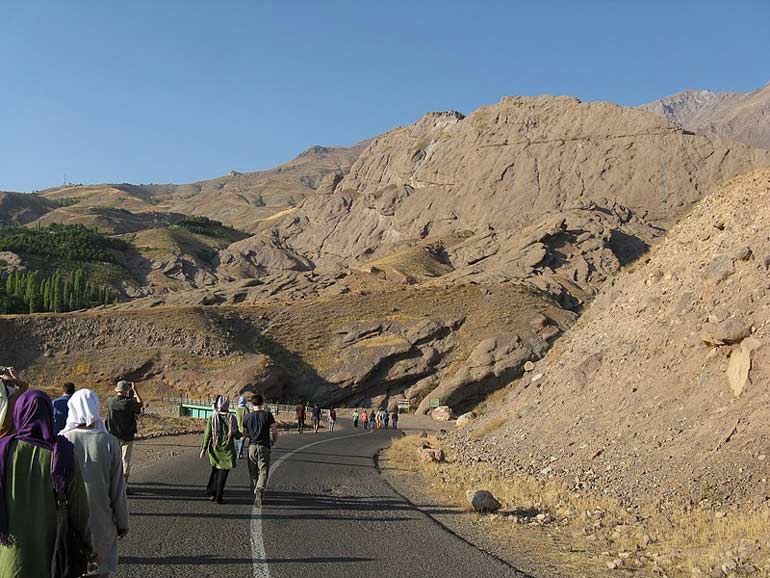
Where is Alamut Castle?
Alamut Castle is located in the Alamut region of Qazvin Province, near Gazorkhan village. Since the castle is situated on a high cliff, a 45-minute hike is required to reach it.
Address: Qazvin Province, 30 kilometers from the city of Moallem Kalayeh, 8 kilometers from the Atan-Gazorkhan junction, Gazorkhan village.
The History of Alamut Castle
The history of Alamut Castle in Qazvin can be divided into two main periods: before the Mongol invasion and after it. In its first 400 years, the castle witnessed many historical events and endured various challenges. According to Nuzhat al-Qulub by Hamdallah Mustawfi, the castle was built in 246 AH, during the early years of the Abbasid Caliphate under al-Mutawakkil.
The Castle’s History
In Nuzhat al-Qulub, Mustawfi notes that the builder of the castle was Hasan ibn Zayd and that it was originally constructed with military and security purposes in mind. Some believe that Hasan-i Sabbah purchased the castle in 483 AH to use as a military fortress, but the truth is that he actually seized this and other castles.
From 483 to 654 AH, Alamut resisted all foreign attacks, earning it the title of an “impregnable fortress.” Unfortunately, in 654 AH, during the Mongol invasion of Iran, it was set ablaze by Hulagu Khan, like many other important historical sites.
Architecture of the Castle

During the Mongol invasion, many members of the Ismaili forces were killed. This tragic event remains one of the darkest moments in Qazvin’s history. The library at Alamut contained thousands of valuable books, most of which were lost in the Mongol fire. Fortunately, a man named Ata-Malik Juvayni managed to persuade Hulagu Khan to save part of the library, preserving an essential piece of the castle’s history.
However, the destruction didn’t stop there. During the Qajar period (around 1006 AH), parts of Alamut were destroyed in the pursuit of rumored hidden treasures. This incident underscores the idea that sometimes, our own actions lead to our losses. As if the Mongol invasion hadn’t caused enough damage, Qajar rulers too contributed to the ruin of this iconic fortress.
Who Was Hasan-i Sabbah?
Hasan-i Sabbah, formally known as Hasan ibn Ali ibn Ja’far Sabbah Hamiri, founded the Ismaili state on the Iranian plateau. Initially trained as a Twelver Shia, he traveled widely for further education, even going to Egypt before the age of 30 to complete his studies.
In 483 AH, Hasan chose Alamut as a sanctuary for the Ismailis, who were under threat from the Seljuks. After capturing Alamut, he went on to seize other fortresses, including Lamassara, Shahdiz, and Qohestan, as part of his defense against the Seljuks and his efforts to promote the Ismaili faith.
The Origin of the Name Alamut
The name Alamut is derived from two main parts: “Al” and “Amut.” “Al” is related to the word for eagle, and “Amut” means “to teach.” According to legend, a Dailamite king was led to the location of Alamut by an eagle, inspiring him to build the fortress and name it “the eagle’s nest.”
Others believe that in the Dailamite and Gilaki languages, “Amut” means “to teach,” suggesting that Alamut could also mean “the eagle taught” or “the training of the eagle.”
Entrance to Alamut Castle

Surrounded by cliffs on all sides, Alamut is nearly impregnable, with the only entrance located on the northeast side, just below the eastern tower.
In the northeast, north, east, and south sections, deep moats have been dug, preventing access. On the northeast side, there’s a 6-meter-long tunnel carved into the rock, allowing visitors to pass through to the southern tower and southwest wall. Here, a small guardroom was likely once situated.
The stone steps at the entrance were added during the Qajar era. Before that, mules were used to navigate the entry route. The current entrance features both a stairway and a flat path, ending with a door that leads to the castle interior.
Different Parts of the Castle
Locals also call Alamut Castle “Hasan’s Castle.” The fortress consists of two main sections: the eastern “Jorqala” and the western “Pilqala.” The western section is higher and referred to as the “Upper Castle,” while the larger fortification is called Pilqala.
- Watchtowers
Guard rooms were carved into the rock, with one located in the southern section. To the east of this room, a 2-meter-high wall built into the rock served as a guard tower. - Rooms
In the first room of Alamut, there is a small water pit that refills itself if fully emptied, possibly linked to a pool on the southern side of the fortress. Next to this room lies the northern wall, measuring 12 meters high and 1 meter thick. - A pool, carved into the southwestern part of the castle, is 8 meters long and 5 meters wide, filling with water every spring and winter. A grapevine still grows nearby, and this area was likely Hasan-i Sabbah’s residence between 483 and 654 AH.
On the eastern side of the fortress, residences for the guards and their families were established, while on the northern side, ten mangers were built for livestock. Other rooms, once carved into the rock, no longer remain. - The Moat
The only entrance to Alamut Castle is on the northeast side, and it is surrounded by a deep moat, adding to its reputation as a strong fortress. - Courtyard
Between the Upper and Lower Castles lies a courtyard, surrounded by walls that divide the castle into two distinct areas. Today, remnants of the past, like piles of stone and earth, can still be seen. These are likely remains of destroyed structures. - Water Reservoir
On the eastern side, three small reservoirs were carved into the rock, but unfortunately, they no longer exist. - Library
The Alamut library, established by Hasan-i Sabbah, housed thousands of valuable books and manuscripts. As mentioned earlier, most of these were burned during the Mongol invasion. This library was a significant achievement, gathering notable works of that era. Juvayni, in his History of the World Conqueror, referred to the Alamut library, noting that it contained over 400,000 volumes.
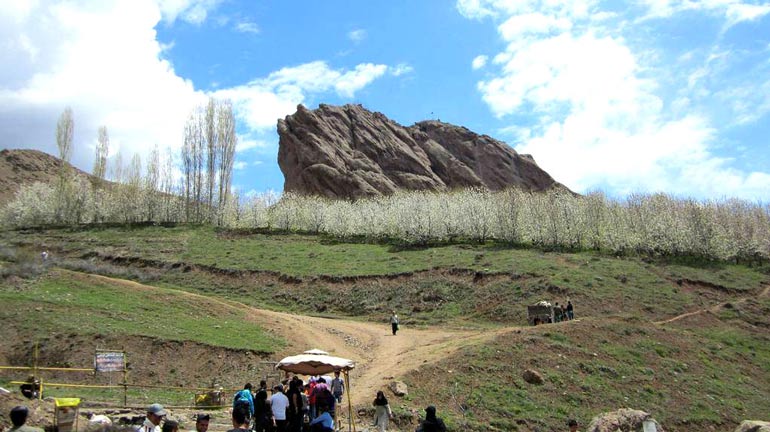
What Were the Castle’s Defense Features?
Alamut’s main defensive features included the deep moats surrounding the castle. Positioned on high ground with only one accessible route, the fortress was difficult to conquer. Designed for military purposes, the moat served as an initial defense mechanism.
On the southern slope, a 50-meter-long and 2-meter-wide trench was dug, once filled with water. This trench’s water source was within the castle, making infiltration nearly impossible. Moats were dug on other slopes as well, with steeply slanted walls above each moat, preventing enemies from scaling them.
The Architecture of Alamut Castle
Alamut Castle in Qazvin consists of two sections, eastern and western, known as “Jorqal” and “Pilaqla.” Within the rock walls of the castle, rooms were carved out for guards. The castle is strategically located, surrounded by a moat—some parts natural and some hand-carved into the mountain. This was designed to protect the military stronghold.
One of the marvels of this historical castle’s architecture is a room containing a small water pit that remains filled even when completely emptied, due to its connection to one of the reservoirs.
Alamut Castle is built on the top of a rugged, nearly inaccessible rock, with walls that follow the contours of the cliffs, leaving no entry points. As a result, the wall thickness varies in different sections. Among the castle’s towers, only three remain—north, east, and south—of which the eastern tower is the most intact.
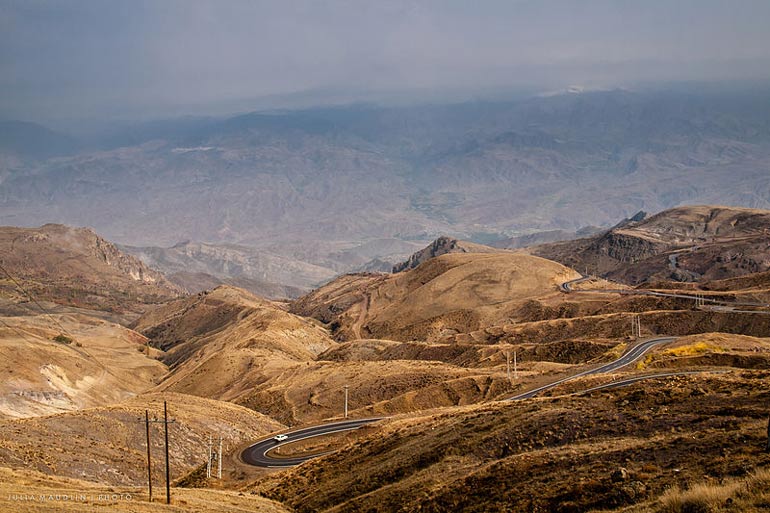
From the top of the castle, you can view the Alamut Valley and a river running through the region. The fortifications at the entrance of the castle are more robust than other sections, as the 6-meter tunnel entrance was likely the only access point for enemies, making it more heavily fortified. Some of the castle’s rooms were carved into the rock, and stone was the main material used in its construction.
On the southwestern side of Alamut Castle, an 8-meter-long, 5-meter-wide reservoir carved into the rock fills with water from spring and winter rains each year. On the southwest side of this reservoir was the residence of Hassan-i Sabbah, and on the eastern side, there was lodging for the castle’s guards. Notably, cisterns were also carved into the mountain, though, unfortunately, none of them remain today.
The Treasures of Alamut Castle
Hassan-i Sabbah amassed great wealth during his time, and many believed he had hidden his fortune in Alamut Castle like a buried treasure. According to old legends, he concealed a vast, historical treasure in the castle, and thus, during the Qajar era, parts of the castle were destroyed in the first search for this treasure.
Qajar princes believed they could find this treasure, but their only legacy for future generations was the destruction of one of Iran’s most important historical sites.
Visitor Facilities Around the Castle
According to recent statistics, around 1,200 people visit Alamut Castle each year as one of Qazvin’s historical attractions. Many visitors are foreign tourists, making it essential to provide amenities for this historical site. Currently, due to the “Accommodation” initiative, 15 rural houses in the village of Gazorkhan have been prepared to host visitors and tourists who come to explore Alamut’s sights.
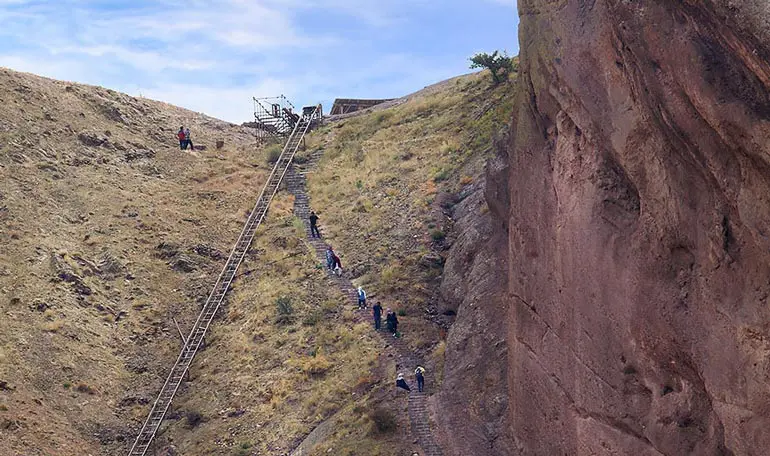
Best Time to Visit Alamut Castle
The Alamut region in Qazvin is cold and mountainous, making late spring and early summer the best time to visit Alamut Castle and the surrounding attractions. During this time, the weather in Alamut is mild. Additionally, nature around the castle is lush and beautiful, so you can enjoy the natural surroundings after visiting the castle.
Keep in mind that Alamut Castle is crowded with tourists in late spring and early summer, so if you prefer to visit when it’s quieter, choose other months—but be mindful of the intense cold during those times.
Even in summer, Alamut’s nights are cold, so if you’re planning to stay in the area, make sure to bring warm clothing.
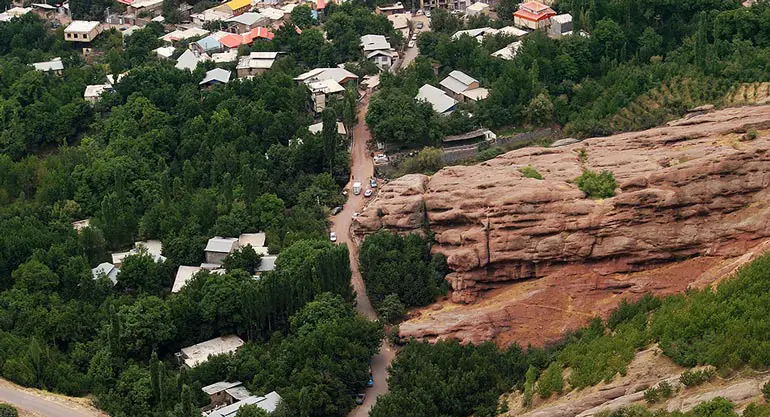
Do You Have a Memory of Alamut Castle?
It would be wonderful if all travelers shared their experiences so that those planning to visit know exactly what to expect. If you have a memory of Alamut Castle or want to mention something that wasn’t covered in this article, feel free to leave us a comment

